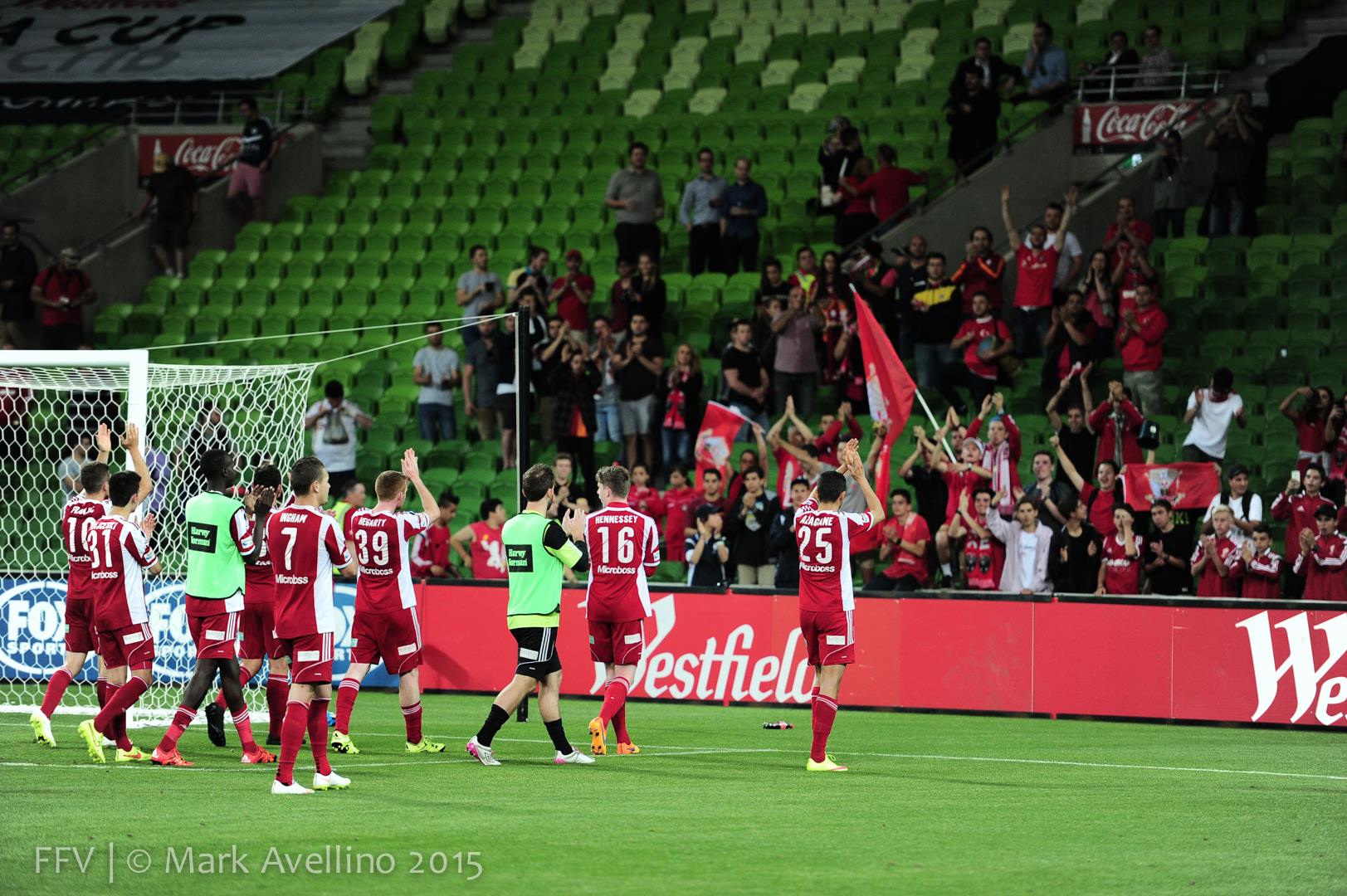Timing-wise, it was always likely that Hume City’s FFA Cup run would end in semi-final defeat against Melbourne Victory.
Wednesday marked over five weeks since the club’s quarter-final win over Oakleigh Cannons on September 22, its most recent competitive fixture. Before that, Hume’s final NPL game was on September 4, a semi-final loss to Bentleigh Greens. Two competitive games in two months.
If Broadmeadows’ part-timers weren’t expected to make a significant impact against their full-time opposition – who are already three weeks into A-League season – the difference in match preparation made the task almost impossible. There’s only so far determination can take you – and Hume showed plenty of fight throughout the contest – before fatigue sets in.
“I’ve said the last three, four weeks, it doesn’t matter how much you train the boys, you can do a mini preseason, you can do football conditioning, if you’re not match fit its a big difference,” coach Lou Acevski said after the game.
“We had players pulling up with cramps, sore hamstrings.
“I would have loved to play this five weeks ago. I’m not saying it would have been a different result, but I know my boys, for me, were the fittest in the league this year at our level and I knew they would have had a bit more energy.”
The landscape of Australian football, where state and national competitions are held at different times of the year, means the competition will never be a level playing field. However, the common theme among state clubs is that the FFA Cup extends too far into the off-season, at a time when A-League teams are approaching peak match fitness.
In two years, only one member federation club has claimed an A-League scalp, when Adelaide City defeated Western Sydney in the Round of 32 of the 2014 edition. That clash was in August.
Arguably, the FFA Cup bears greater significance to state clubs and fans than their A-League counterparts, remaining the only brush with the top flight in a system without promotion and relegation. Greater intrigue surrounds clashes at suburban grounds involving state league clubs, as evidenced by the 11,000 at Olympic Village for Heidelberg United’s clash against Melbourne City, more than any game at an A-League stadium.
Heidelberg coach George Katsakis also lamented his team’s lack of match fitness that night, which culminated in a 5-0 defeat with four of the goals coming after the 65th minute.
“I think the four week break for us had something to do with that, because they’re [Melbourne City] prepping up for the start of their season and they’re working at a much different pace than us.” Katsakis said after the game.
“They’ve had consecutive games every second or third day, whereas we’ve had to find an opponent, the tempo and intensity at training you’ve got to try and make it fairly real, which makes it very hard.
“So it makes it very hard for an NPL club to go and play in the final.”
While the competition had already been moved back around a month from the Round of 16 onward this year compared to last, why not have the FFA Cup reach its climax before October? It won’t overlap with clubs’ A-League campaigns, instead further shortening one of the longest national off-seasons anywhere in the world.
Meanwhile, it would ensure a member federation club is in better condition to face the already imposing challenge of a professional outfit.
If the true Magic of the Cup – the excitement of a giant killing run – is come to fruition, the fixture should be less favourable to A-League clubs in the latter stages of the competition.

